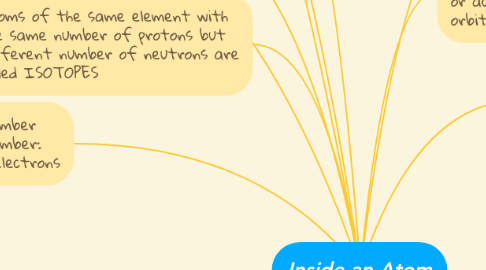Inside an Atom
by Suresh Kumar

1. Gamma radiation is used to sterilize medical supplies,making them germ free.
2. Electrons have a mass of 1/1836amu. It has a negative charge. They are arranged in energy levels around the nucleus. It can hold only a limited number of electron. First level:2 electrons Second and Third level: 8
3. Atomic Number= Number of Protons Mass number: total protons and electrons
4. Atoms of the same element with the same number of protons but different number of neutrons are called ISOTOPES
5. Any atom that has 8 electrons in its outermost shell is found to be stable and inert.It does not take part in chemical reactions.
6. USES
6.1. Leaks in pipes, and the wear and tear of machine parts may be located by using oils which have been slightly radioactive. Radioisotopes are added to fertilizers to study how well they are absorbed by plants.
7. In 1898, Marie Curie and her French husband,Pierre discovered radiation and proved that the salt contained a new element, radium.
7.1. it had 2 particles and 3rd was made of rays. Alpha particles,Beta particles and Gamma rays.
8. Today scientist know that certain elements have isotopes which are radioactive. These isotopes are unstable and break up easily,giving off rays and particles. Detected by GEIGER COUNTER.
9. There are 200 sub-atomic particles smaller than the atom. There are 3 main types of sub atomic particles
9.1. Protons,Neutrons and Electrons.
10. Protons are positively charged.The number of protons in an atom is equal to the number of electrons,the whole atom is neutral.It has a mass of 1 amu.
11. Neutrons are neutral. all of them are identical. Although the mass of a neutron is slightly more than a proton.its mass will be still considered as 1 amu.
11.1. An injection of a radioactive isotope permits radiologists to trace its path through the human body and also see how it is absorbed. This helps them in the detection and treatment of diseases.
12. The maximum number of electrons to be found in a given orbit was 2n* where n is the number of orbits
13. The number of electrons that one atom of an element can donate or accept from its outermost orbit determines its valency


